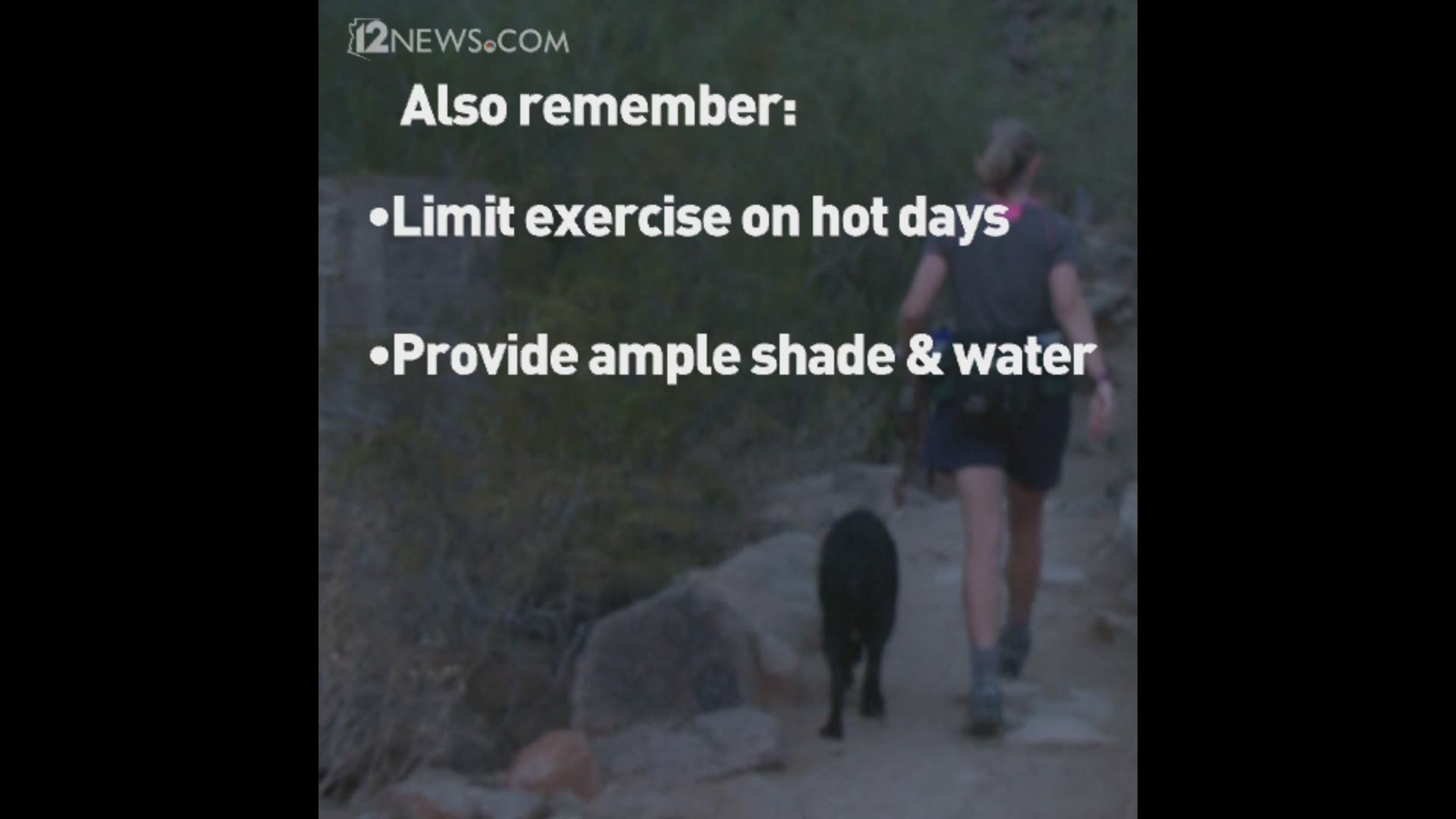PHOENIX — Now that Phoenix has reached triple-digit temperatures, the city is reminding dog owners that their four-legged exercise buddies aren’t allowed on hiking trails when the temperature is over 100 degrees.
The City of Phoenix Parks and Recreation Board implemented the ban in June 2016.
The board refused to ban people from hiking mountain trails when the temperature is over 110 degrees; instead, they directed park personnel to do more research on the number of rescues and how many are a result of hikers going out not prepared for the heat.
Here are some more tips from the Humane Society on keeping your pets cool in the summer
• Don’t leave your pets in a parked car
Just don’t do it, not even for a minute. When it’s 72 degrees outside, the temperature in your car can get up to 116 degrees within an hour, according to the Humane Society.
•Limit exercise on hot days
On hot days, limit exercise to the early morning or evening hours. This can be a good way to avoid burning your dog’s paws on the hot asphalt. You should also walk your dog on the grass whenever possible.
•Provide ample shade and water
Trees and tarps will give you plenty of shade without obstructing air flow. A doghouse, however, might make things worse. When it’s especially hot outside, add ice to the water whenever possible.
•Look for signs of heat stress
Heavy panting, glazed eyes, a rapid pulse, a staggering gait, vomiting or a deep red or purple tongue are signs that your pet is overheated. Here’s what to do if your pet is suffering from heatstroke.
•Watch the humidity
When the monsoon rolls around in June, remember that humidity can affect your pet as well as heat. Because animals pant to cool off, they may be unable to cool themselves if the humidity is too high.
•Don’t rely on a fan
Fans don’t cool off pets as effectively as they do people because they respond differently to heat.
•Cool your pet inside and out
Always provide water, whether your pets are inside or out with you. Also, it could be a good idea to bring ice packs or cold towels to apply to your dog’s head, neck and chest. If your pet doesn’t find baths stressful, see if a cooling soak will help.

